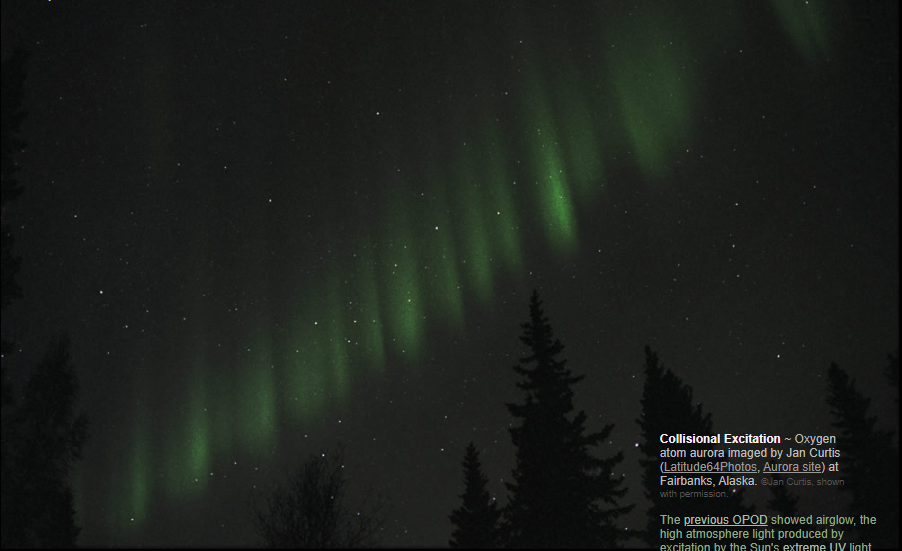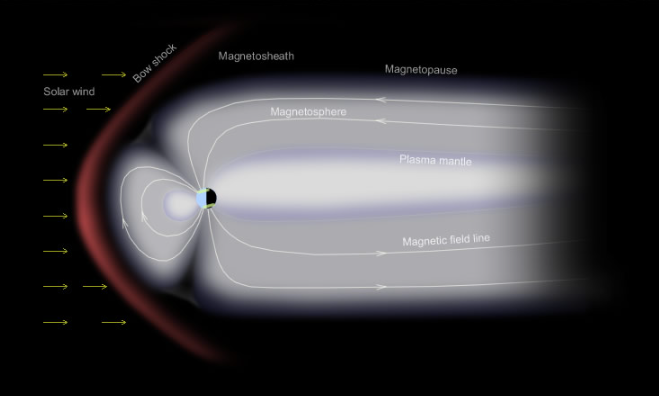Collisional Excitation
Collisional Excitation: Unveiling the Phenomenon of Aurora
The mesmerizing phenomenon of aurora, with its vibrant green hues illuminating the night sky, has captivated humans for centuries. But have you ever wondered what causes this spectacular display of light? The answer lies in a process called collisional excitation, where oxygen atoms are excited by collisions with high-energy particles. In this article, we will delve deeper into the intricacies of collisional excitation and explore the fascinating science behind the aurora.
Understanding the Science Behind Aurora
Auroras are the result of energetic particles from Earth's magnetic tail bombarding the high atmosphere. These particles, comprising solar electrons, protons, and heavier ions, enter Earth's magnetosphere and get swept back into the plasma mantle of the night-side magnetotail. Trapped in this region, some of these particles undergo violent acceleration downwards, triggering the mesmerizing light show we know as the aurora.
The Role of Oxygen in Auroras
One of the key players in the auroral display is oxygen. Specifically, the green color that dominates the aurora is attributed to oxygen atoms undergoing a process known as decay from an excited state to a lower energy state. This decay occurs at a specific wavelength of 557.7 nm.
Exciting Oxygen Atoms: The Collisions
The process of exciting oxygen atoms begins with collisions. High-energy particles accelerated into the atmosphere from Earth's night-side magnetotail collide with oxygen atoms, imparting energy to them. These collisions elevate the oxygen atoms to an excited state, from which they eventually decay to a lower energy state, emitting light in the process.
Magnetic and Energetic Conditions: The Catalysts
However, not all collisions result in the production of aurorae. The occurrence of vibrant auroral displays depends on specific magnetic and energetic conditions. When the right conditions align, solar electrons, protons, and heavier ions enter the sunward side of Earth's magnetosphere. Magnetic forces then sweep them back into the plasma mantle of the night-side magnetotail, where they are trapped until magnetic rearrangements accelerate some of them violently downwards.
The Role of Solar Wind
While high-energy particles from Earth's magnetotail are crucial for the formation of aurorae, they alone are not sufficient. The solar wind, a stream of charged particles emanating from the Sun, plays a vital role in enhancing the energy and intensity of the particles in Earth's magnetosphere. Without the energizing effect of the solar wind, the particles would lack the necessary energy to produce the awe-inspiring aurorae we observe.
Investigating Collisional Excitation
Scientists have conducted extensive research to understand the complexities of collisional excitation and its role in the formation of aurorae. Through laboratory experiments and theoretical models, they have gained insights into the various factors that influence the excitation process. By simulating the collisional interactions between high-energy particles and oxygen atoms, researchers have been able to unravel the intricacies of this fascinating phenomenon.
Advancing Our Knowledge
Advancements in technology and space exploration have provided scientists with new tools to study collisional excitation and auroral phenomena. Satellites equipped with specialized instruments allow researchers to observe and measure the properties of particles involved in these interactions. This wealth of data has contributed significantly to our understanding of collisional excitation and has paved the way for further exploration and discoveries.
Appreciating the Beauty
While understanding the science behind collisional excitation adds depth to our appreciation of the aurora, it is important not to lose sight of its sheer beauty. The ethereal dance of colors across the night sky continues to mesmerize and inspire awe in all who witness it. The combination of scientific knowledge and aesthetic wonder makes the aurora a truly captivating natural phenomenon.
Conclusion
Collisional excitation stands as a fundamental process responsible for the awe-inspiring phenomenon of aurora. Through collisions with high-energy particles, oxygen atoms are excited and subsequently emit light as they decay to a lower energy state. Understanding the intricate interplay between magnetic forces, energetic conditions, and the solar wind enhances our appreciation of this natural spectacle. As scientists continue to explore the depths of collisional excitation, we gain further insight into the mysteries of our dynamic atmosphere and the captivating beauty of the aurora.

Collisional Excitation ~ Oxygen
atom aurora imaged by Jan Curtis (Latitude64Photos, Aurora site) at
Fairbanks, Alaska. ©Jan Curtis, shown
with permission.
The previous OPOD showed airglow, the high atmosphere light produced by excitation by the Sun's extreme UV light.
The better known, and often far brighter, high atmosphere excitation is the aurora, the result of bombardment by high energy particles from Earth's magnetic tail..
This aurora's predominant green colour is the 557.7 nm wavelength light of oxygen atoms decaying from an excited state to another of lower energy (O1S -> 1D). The oxygen was excited by collisions with high energy particles accelerated downwards into the atmosphere from the earth's night side magnetotail. The particles reach Earth in the solar wind but, on their own, would produce few aurorae because they are ordinarily not nearly energetic enough.
Under the right magnetic and energetic conditions the solar electrons, protons and heavier ions enter the sunward side of Earth's magnetosphere and are swept back by magnetic forces into the plasma mantle of the million km long night-side magnetotail. There they are are trapped until magnetic rearrangements accelerate some of them violently downwards.

Note: this article has been automatically converted from the old site and may not appear as intended. You can find the original article here.
Reference Atmospheric Optics
If you use any of the definitions, information, or data presented on Atmospheric Optics, please copy the link or reference below to properly credit us as the reference source. Thank you!
-
<a href="https://atoptics.co.uk/blog/collisional-excitation/">Collisional Excitation</a>
-
"Collisional Excitation". Atmospheric Optics. Accessed on April 19, 2024. https://atoptics.co.uk/blog/collisional-excitation/.
-
"Collisional Excitation". Atmospheric Optics, https://atoptics.co.uk/blog/collisional-excitation/. Accessed 19 April, 2024
-
Collisional Excitation. Atmospheric Optics. Retrieved from https://atoptics.co.uk/blog/collisional-excitation/.